Posted by: Northwest Eye in General on July 31, 2025
Overview
This article compassionately addresses the causes of little clear bumps on the rim of the eyelid, excluding styes. We understand that noticing these bumps can be concerning, and we want to reassure you. Potential culprits include:
- milia
- chalazia
- xanthelasma
- allergic reactions
- infections
Each condition is explained in detail, highlighting their characteristics, causes, and treatment options. This comprehensive understanding of eyelid bumps emphasizes the importance of seeking professional evaluation for an accurate diagnosis and management. Remember, we are here to help you through this process.
Introduction
Little clear bumps on the rim of the eyelid can be a source of concern for many. We understand that this often leads to confusion and anxiety about their underlying causes. While these bumps are frequently mistaken for styes, they can stem from various conditions, including:
- Milia
- Chalazia
- Skin cancer
Understanding the nature of these bumps not only alleviates worry but also empowers you to seek appropriate treatment. What are the key differences between these conditions, and how can you effectively address them? This article explores the seven primary causes of these eyelid bumps, offering insights into their symptoms, treatments, and when to seek professional help.
Northwest Eye: Expert Diagnosis and Treatment for Eyelid Bumps
At Northwest Eye, we understand that concerns regarding can be distressing. Our dedicated team of ophthalmic surgeons excels in , which can include:
- Little clear bumps on the rim of the eyelid (not stye)
- Milia
- Xanthelasma
With over 50 years of experience in eye care, we utilize to provide you with precise assessments.
We are committed to , ensuring that each individual receives a tailored to their unique needs. This approach leads to optimal outcomes and fosters a sense of security. Our skilled eye surgeon, with more than 15 years of specialized experience, is passionate about and the most effective treatment options available.
It’s common to feel overwhelmed when facing health issues, but our focus on education and individualized care significantly contributes to . We are here to help you through this process, reflecting our dedication to of our community.
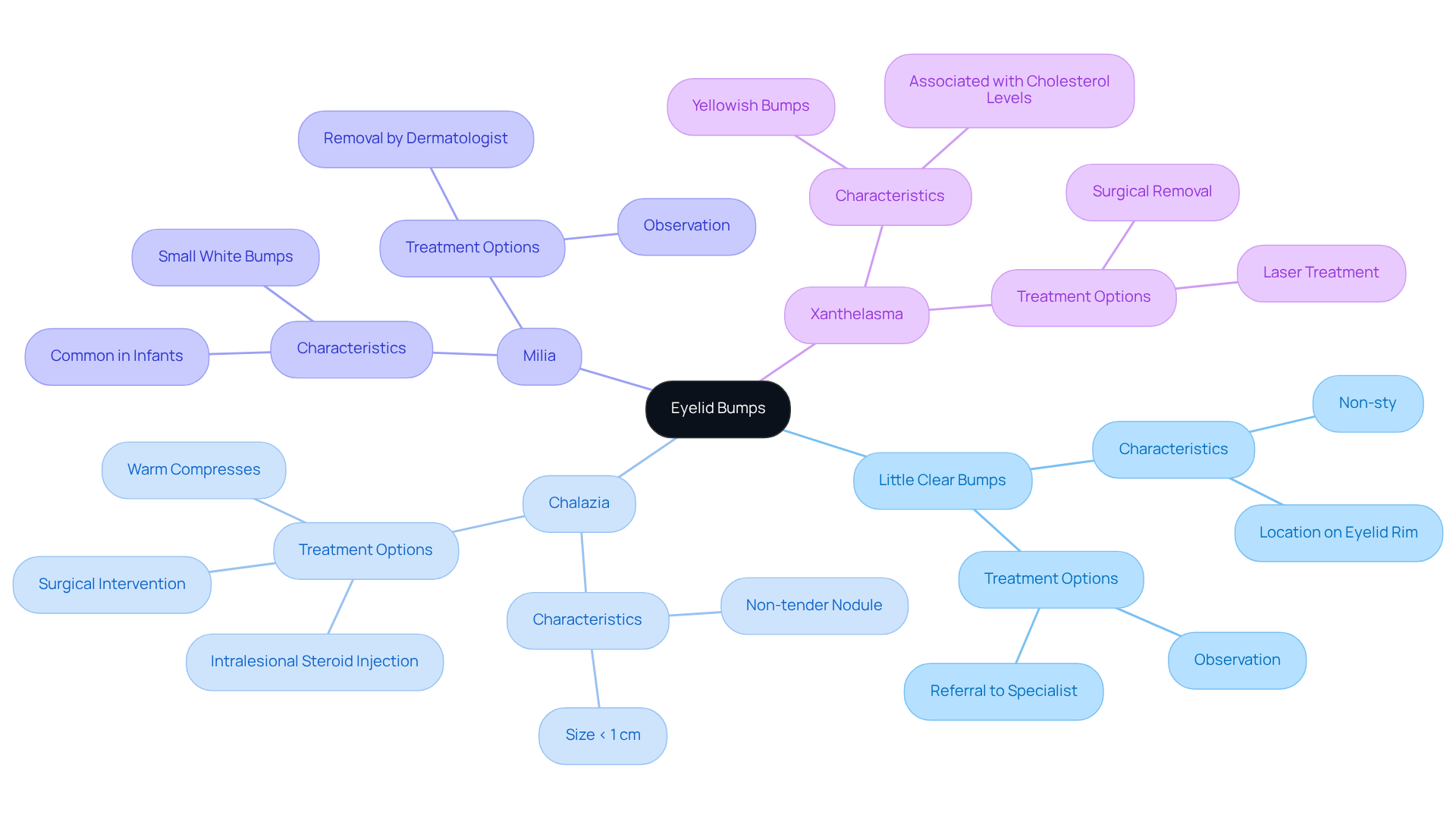
Milia: Small Cysts Causing Clear Bumps on Eyelids
Milia are small, white cysts that typically manifest as (not stye) and appear on the eyelids. We understand that discovering these can be concerning, but rest assured, they are caused by trapped keratin beneath the skin and are harmless. While often mistaken for acne, milia, which are actually little clear bumps on the rim of the eyelid (not stye), are , which can be a relief to know. They can occur in individuals of all ages, including infants.
It’s common to feel uneasy about their presence, but the good news is that milia usually resolve on their own over time. If you desire quicker removal for cosmetic reasons, or can help expedite the process. Remember, we are here to help you through this journey, ensuring you feel comfortable and informed every step of the way.
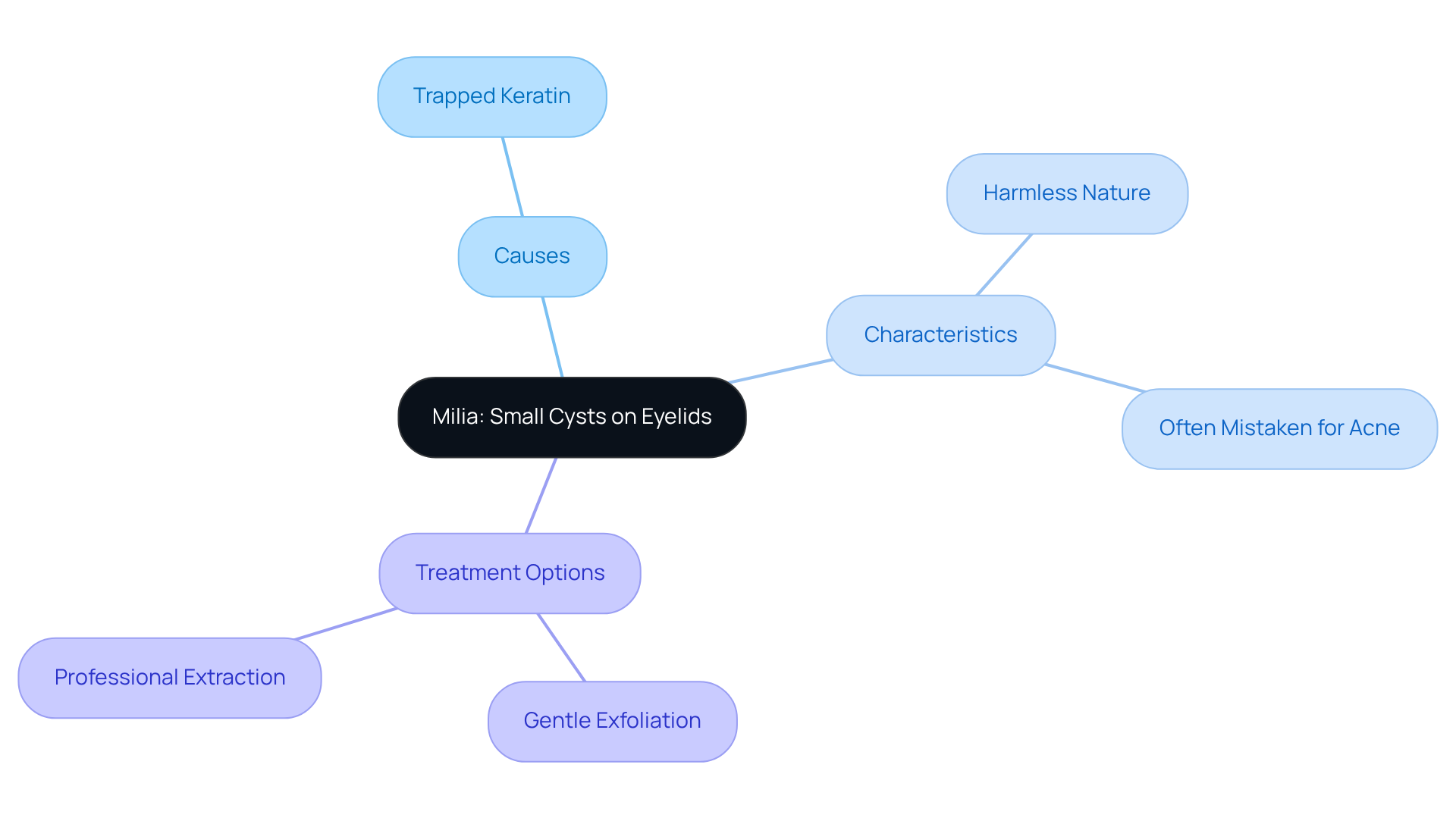
Chalazia: Blocked Oil Glands Leading to Eyelid Bumps
A chalazion is often a painless swelling that develops in the eyelash area and can present as , resulting from a blockage in the meibomian gland, which produces the oil that lubricates the eye. We understand that this can be concerning, especially since , which are caused by bacterial infections. Instead, arise from the accumulation of oil and debris, leading to inflammation. Common symptoms include localized swelling, tenderness, and, in some cases, if the little clear bumps on the rim of the eyelid (not stye) grow large enough to press against the eyeball.
Typically, chalazia can present as little clear bumps on the rim of the eyelid (not stye) that appear as a firm lump or nodule along the edge of the eye. Treatment often starts with warm compresses applied for 5 to 10 minutes, two to three times a day, which can significantly help speed up resolution. If a chalazion persists for several weeks or becomes large and unsightly, . Options include intralesional corticosteroid injections to reduce inflammation or surgical drainage to alleviate symptoms and restore normal eyelid function.
Recent studies show that conservative management, such as maintaining and using warm compresses, is effective for many patients. We encourage you to maintain eyelid hygiene, as it helps prevent the development of eye diseases and bumps. However, if you experience recurrent chalazia or have underlying conditions like blepharitis, which can result in little clear bumps on the rim of the eyelid (not stye), you may need more intensive care strategies. High client satisfaction rates reflect our clinic’s commitment to excellence and , highlighting the importance of for tailored management plans.
can empower you to seek timely care and improve your eye health. Gently cleansing the area around your eyes once a day with a mild, non-irritating cleanser is a practical step towards maintaining eye health. Remember, we are here to help you through this process.
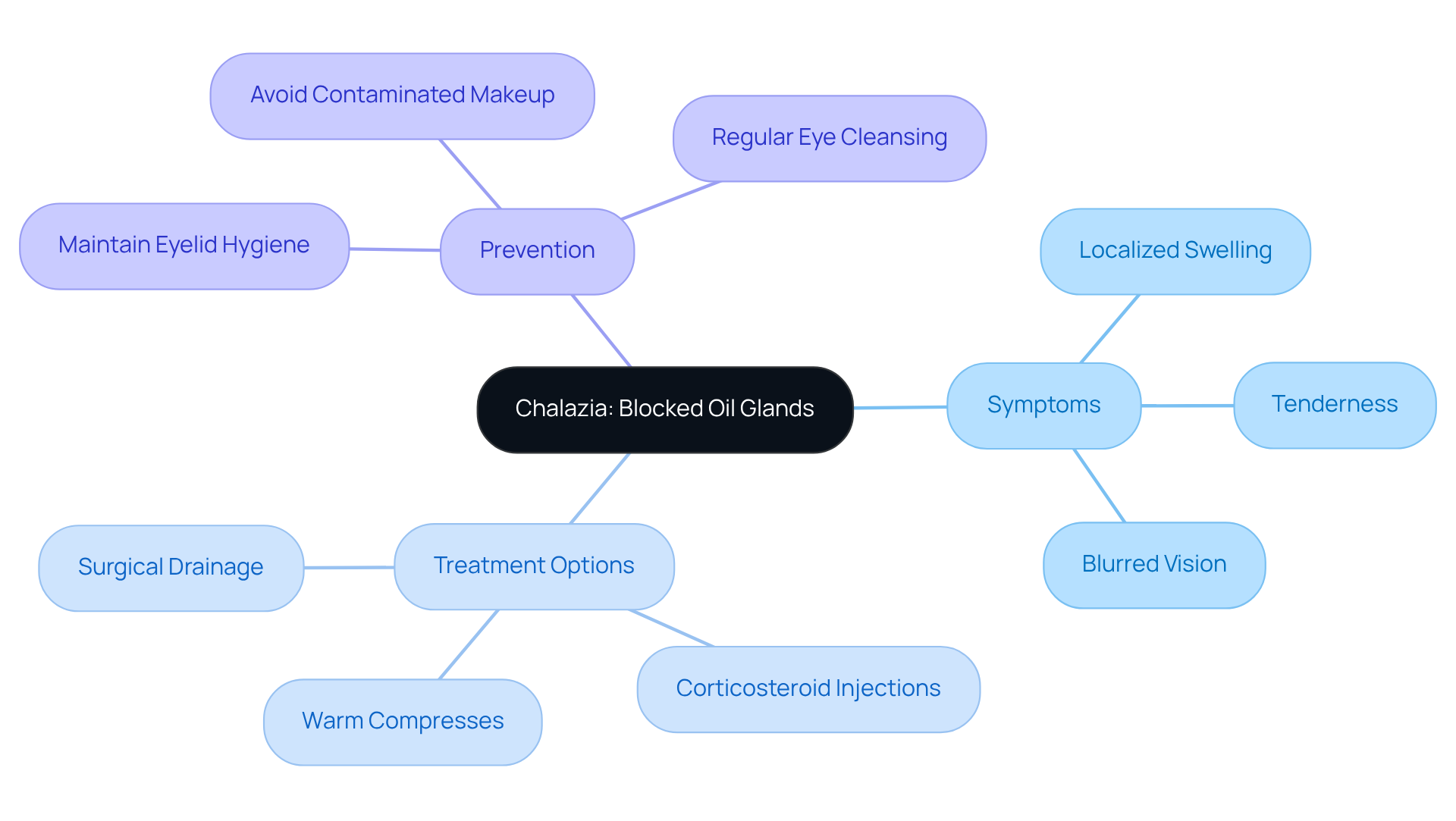
Xanthelasma: Yellowish Bumps on the Eyelids
Xanthelasma are soft, yellowish patches that typically appear on or around the eyes. We understand that noticing these changes can be concerning. While they are generally harmless, they may indicate or other lipid disorders. It’s common to feel anxious about health-related issues, especially as these protrusions are more frequent in middle-aged and older individuals.
If you’re worried about xanthelasma, know that there are available. , , or chemical peels can be considered, particularly if they cause or are linked to underlying health issues. We are here to help you through this process and provide the support you need.
Remember, seeking care is a positive step towards better. You’re not alone in this journey, and there are in making informed decisions about your treatment.

Skin Cancer: Serious Bumps on the Eyelid Requiring Attention
Bumps on the upper lid, particularly (not stye), can be a serious concern, especially when they may indicate , the . We understand that can be alarming. Symptoms to watch for include:
- Persistent little clear bumps on the rim of the eyelid (not stye) that may change in size, color, or texture
- Sores that fail to heal
Basal cell carcinoma is the most prevalent malignancy of the eye area, making awareness and . Early intervention can significantly enhance treatment success rates, providing you with peace of mind.
, type, and intensity of the tumors. These may involve or other therapies tailored to your individual needs. It’s common to feel uncertain about what lies ahead, but know that there are . Additionally, is crucial for prevention, as it protects against skin cancer.
If you notice any unusual alterations in the area around your eyes, is essential. We are here to help you through this process, ensuring timely intervention and optimal outcomes. Your health and well-being are our top priorities.
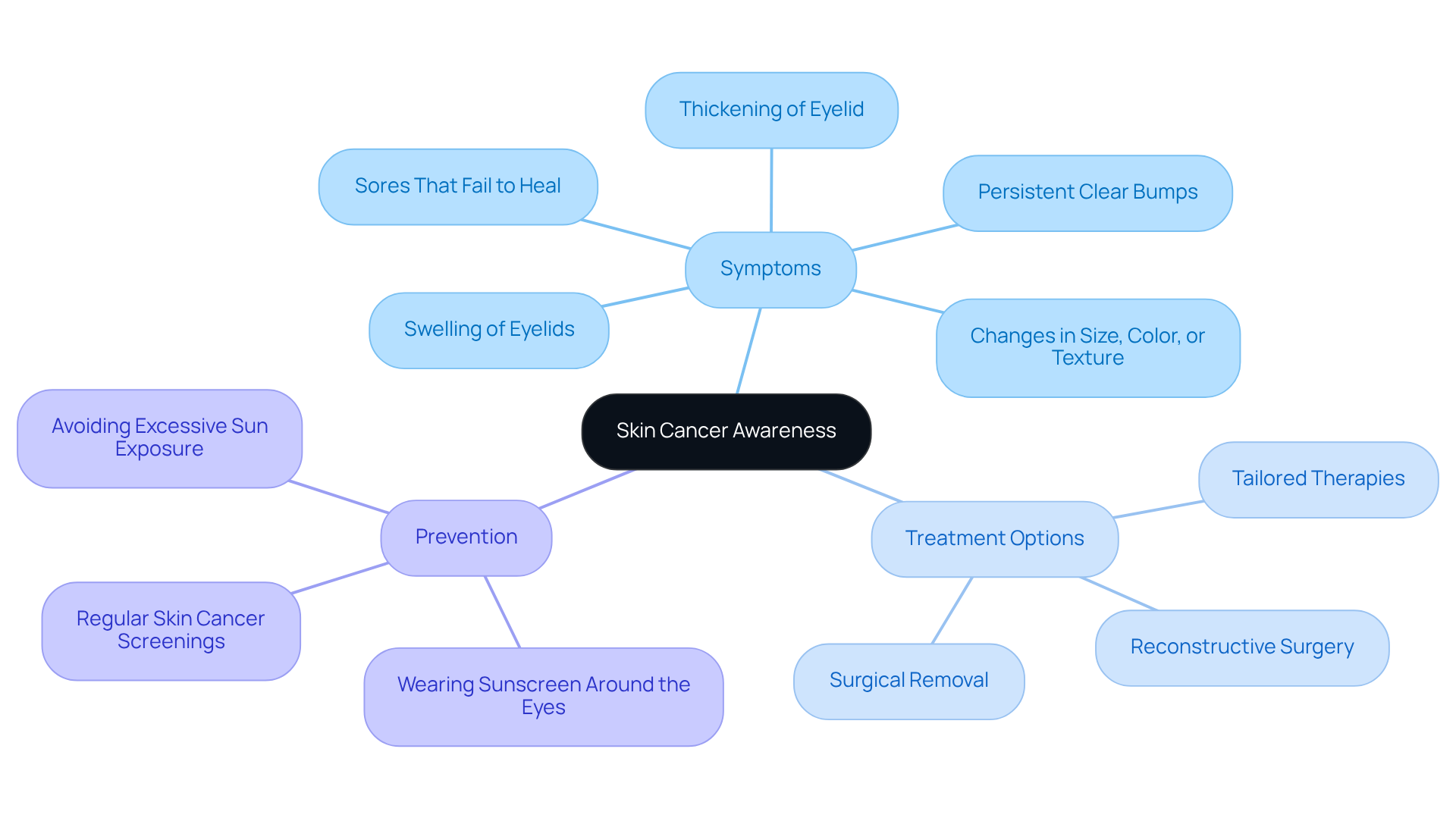
Allergic Reactions: Causes of Clear Bumps on Eyelids
Allergic responses can lead to the development of , often stemming from concerns like and . Common allergens responsible for these reactions include:
- Cosmetics
- Pollen
- Pet dander
- Certain medications
We understand that these issues can be distressing, and statistics show that allergic contact dermatitis is prevalent. Skin tests frequently identify triggers such as:
- Metals
- Preservatives
- Fragrances
Symptoms typically manifest as .
focus on avoiding known allergens, which is crucial for handling symptoms. can alleviate itching, while topical corticosteroids help reduce inflammation. It’s common to feel overwhelmed by these options, but using moisturizers free from alcohol, fragrance, dyes, and irritating chemicals is recommended for conditions like atopic dermatitis. If symptoms persist despite these measures, is advisable for further evaluation and tailored treatment options.
Recent updates in patient management emphasize the importance of , such as intradermal tests and skin prick tests. This enables targeted interventions that enhance patient outcomes. As Aubrey Bailey, PT, DPT, CHT, notes, “The key is to identify the trigger.” This method not only assists in symptom control but also helps avert complications that can develop from untreated dermatitis of the eyelids. We are here to .
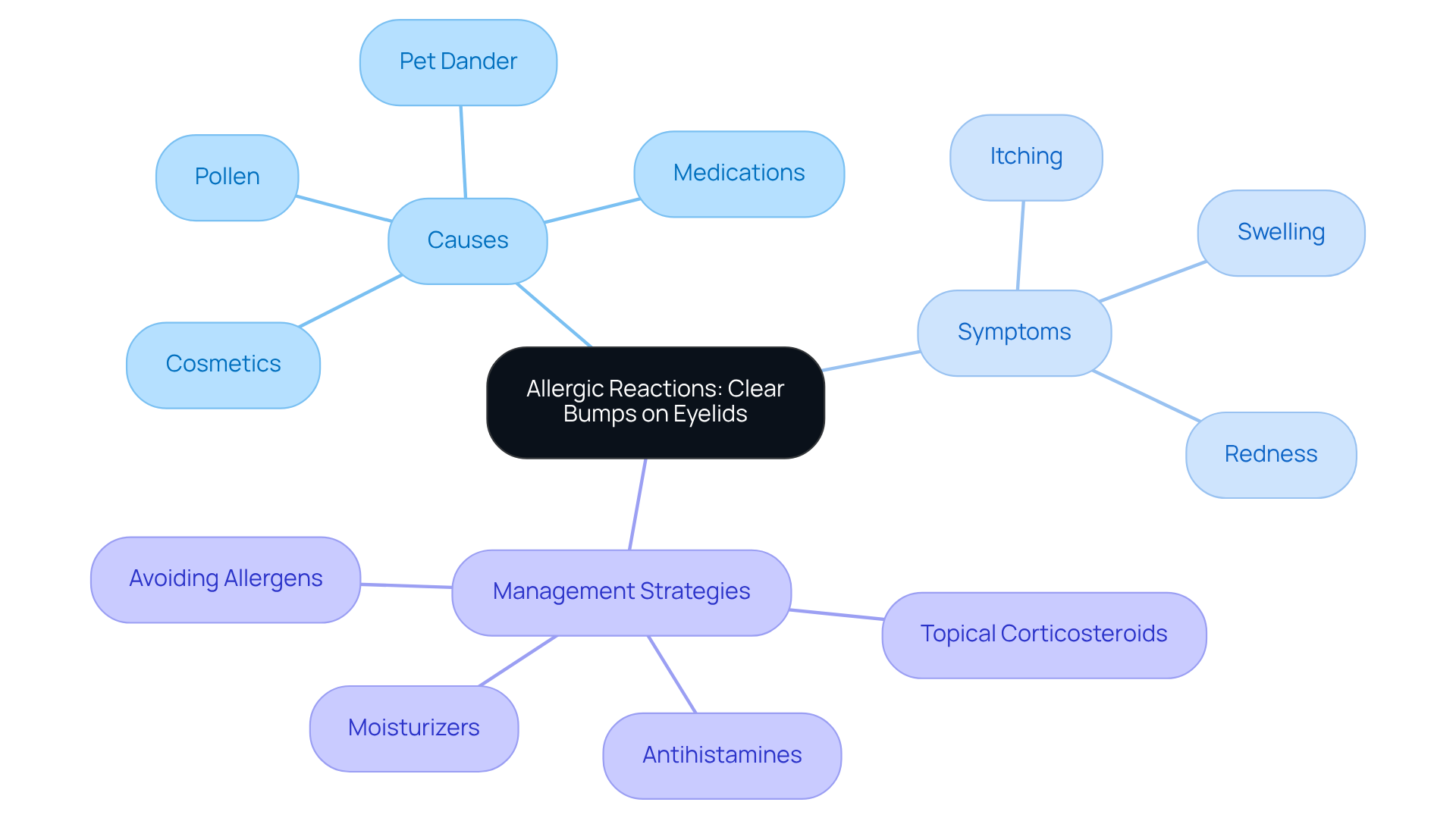
Infections: Viral and Bacterial Causes of Eyelid Bumps
Eyelid swellings can be concerning, and they may arise from various infections, both viral and bacterial. For example, styes are often caused by , with Staphylococcus aureus being the most common culprit, accounting for 90% to 95% of stye lesions. If you’ve ever experienced a stye, you might recall the localized redness, swelling, and tenderness that can resemble a painful pimple on the eyelid. It’s common to feel discomfort during this time.
In contrast, viral infections like molluscum contagiosum can lead to raised, painless (not stye) that may appear clear or flesh-colored. While most styes typically clear up within one to two weeks with conservative care—like —persistent or severe cases may require or a referral to an for further assessment. If a hordeolum lesion does not diminish in size within that timeframe, we recommend seeking professional help.
Statistics show that styes are quite prevalent, with many individuals experiencing them at least once in their lifetime. If you suspect an , it’s essential to to ensure appropriate management and prevent complications. Remember, you are not alone in this; many have walked this path. As specialists emphasize, ” involving various healthcare professionals,” ensuring that you receive customized treatment based on your specific needs.
Additionally, to support your recovery, it’s best to avoid until your eyelid has healed. We are here to help you through this process, providing the care and support you need.
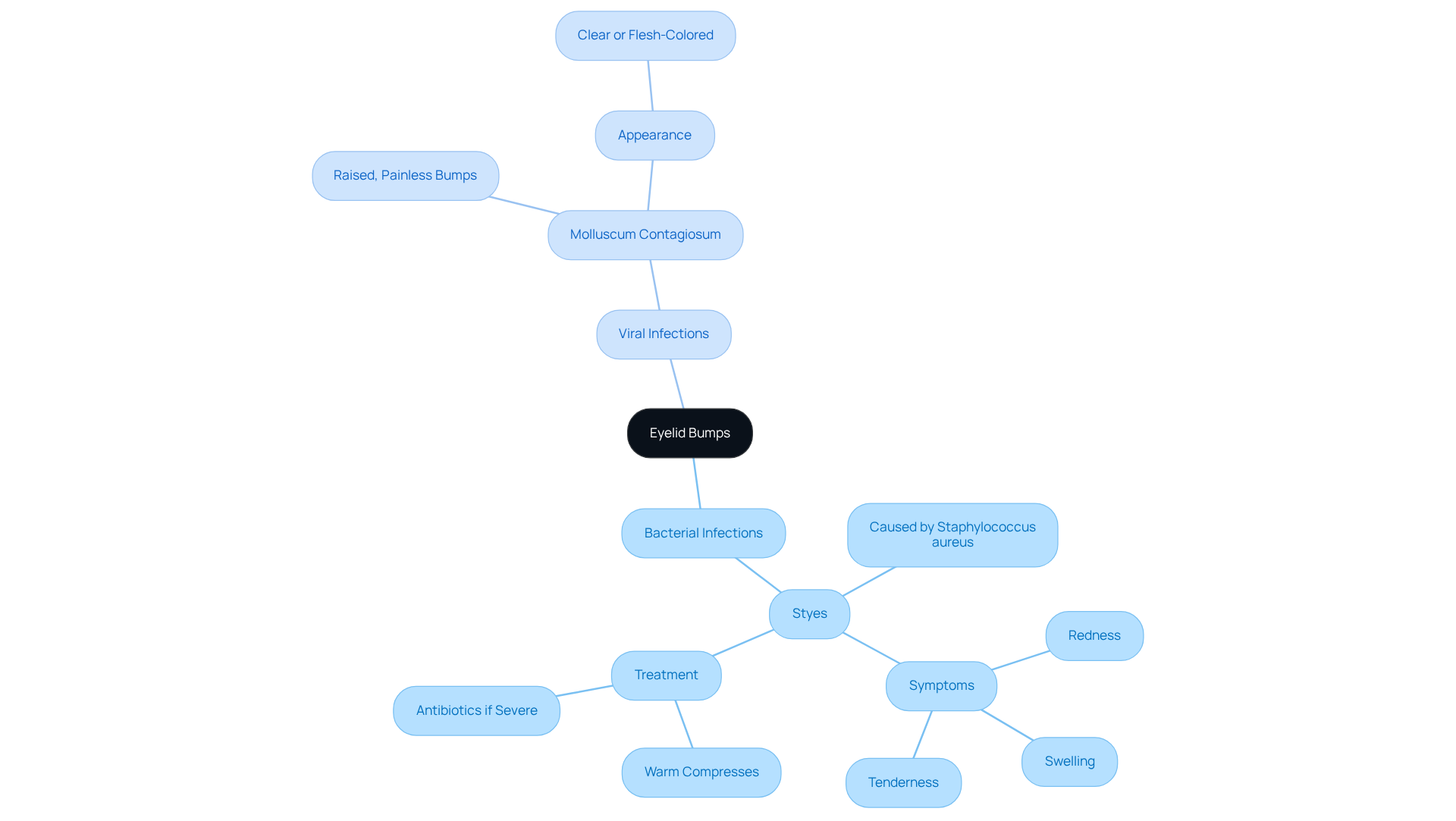
Conclusion
Understanding the various causes of little clear bumps on the rim of the eyelid—distinct from styes—is essential for effective management and peace of mind. We know that noticing these bumps can be concerning, and this article has explored several common conditions, including:
- Milia
- Chalazia
- Xanthelasma
- The potential implications of skin cancer
- Allergic reactions
- Infections
Each condition presents unique characteristics and treatment options, emphasizing the importance of recognizing symptoms and seeking appropriate care.
Key insights reveal that while some bumps may be harmless, like milia, others, such as chalazia or xanthelasma, may require medical intervention. It’s common to feel uncertain about what these bumps mean, but awareness of the symptoms associated with these conditions can empower you to take proactive steps towards your eye health. Furthermore, understanding the role of allergens and infections highlights the need for personalized care and treatment plans tailored to your individual needs.
Ultimately, vigilance in monitoring changes around your eyelids and consulting with healthcare professionals can lead to timely diagnosis and treatment. We understand that this journey towards better eye health starts with awareness and education, reinforcing the significance of professional guidance in navigating these concerns. Taking action to address any unusual changes not only promotes your well-being but also fosters a sense of control over your health.
Frequently Asked Questions
What types of eyelid bumps does Northwest Eye diagnose and treat?
Northwest Eye diagnoses and treats little clear bumps on the rim of the eyelid (not stye), chalazia, milia, and xanthelasma.
What are milia, and how do they appear on the eyelids?
Milia are small, white cysts that manifest as little clear bumps on the rim of the eyelid. They are caused by trapped keratin beneath the skin and are harmless.
Are milia inflamed, and can they occur in all age groups?
No, milia are not inflamed and can occur in individuals of all ages, including infants.
How can I address the presence of milia on my eyelids?
Milia usually resolve on their own over time. For quicker removal for cosmetic reasons, gentle exfoliation or professional extraction by a dermatologist can help expedite the process.
What is the experience level of the team at Northwest Eye?
The team at Northwest Eye has over 50 years of experience in eye care, with a skilled eye surgeon having more than 15 years of specialized experience.
How does Northwest Eye ensure patient-centered care?
Northwest Eye provides personalized care plans tailored to each individual’s unique needs, focusing on education and individualized care to enhance patient satisfaction and outcomes.
What should I do if I feel overwhelmed by my eyelid condition?
It is common to feel uneasy about health issues, but Northwest Eye emphasizes education and support throughout the process to ensure you feel comfortable and informed.






